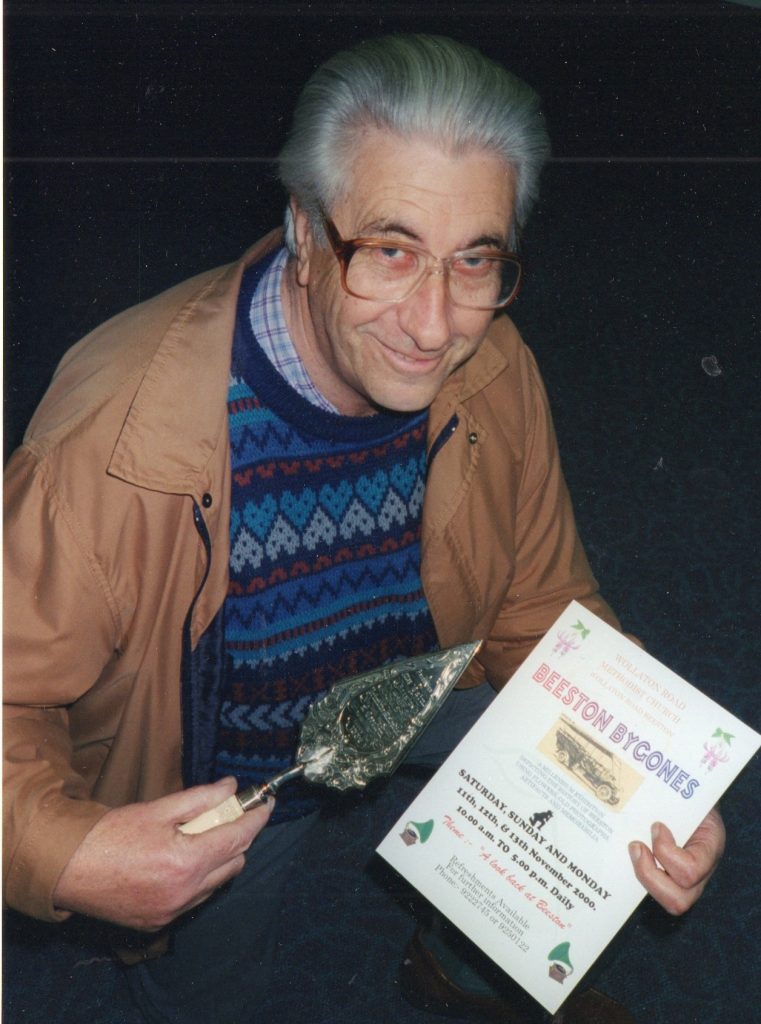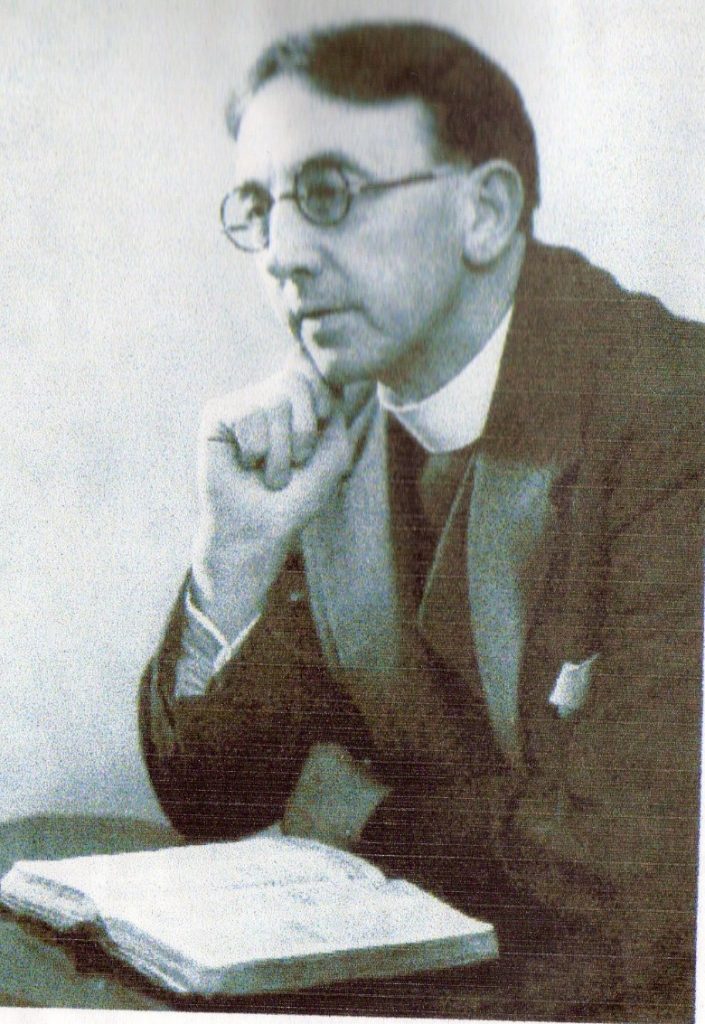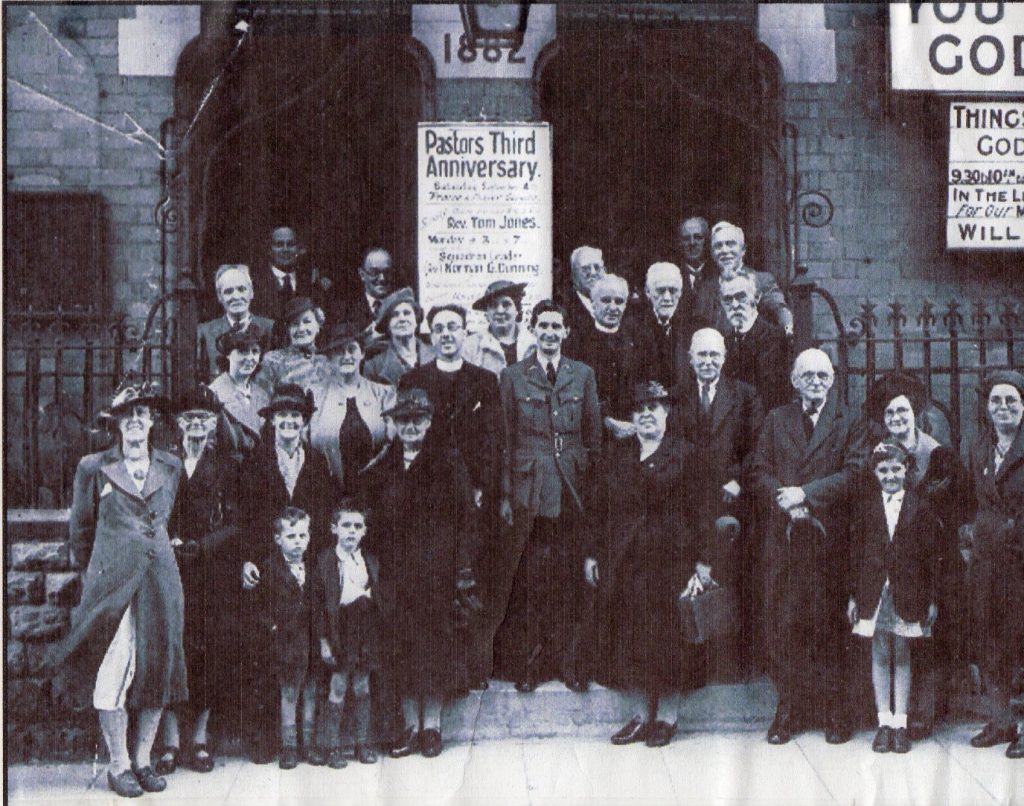Look upwards at the front of Wollaton Road Church and near the top of the red brick building you will read the words Primitive Methodist.
This was a movement started in Staffordshire in the early 19th century by a Wesleyan local preacher Hugh Bourne and a few other enthusiasts. Bourne believed the brand of Methodism that John Wesley had founded the previous century by riding 250,000 miles on horseback to take the message to people across the length and breadth of England had lost some of its original evangelical fervour.
The Primitive Methodists soon acquired the nickname “Ranters” – a title that stuck for many years.
Nottingham’s first Primitive Methodist Mission began in 1815 in a cramped room at Narrow Marsh, one of the poorest parts of the town. It was led by Sarah Kirkland, a young girl in a poke bonnet, who became the first woman Primitive Methodist travelling preacher.

Arriving in Nottingham, Sarah intended to preach in the Market Square on Christmas Eve but her plans were abandoned because of rowdy crowds. On Christmas Day she contacted a small group of revivalists, led by Mr Storer, who had a meeting place in Narrow Marsh.
From these first meetings, 23 converts were made. Soon the flourishing young society moved to much bigger premises on the middle floor of a disused factory at Canaan Street, Broad Marsh, Nottingham. Capable of holding 1,000 people, it was from here that missions were launched in surrounding villages, including Beeston with meetings held in the open-air or villagers’ cottages.
The Beeston society, needing a church of its own, seized an opportunity in 1853 to purchase a Baptist chapel on Butcher Lane (now Wollaton Road) for £170. It could seat about 75 people and had a vestry.
Church archivist Paul Tivey says: “According to historical documents, the chapel was quite a small building, set back from the road and there was a graveyard on one part of the site.”
When the society started to expand – largely because of a hugely successful Sunday School – it was decided to demolish the chapel to create a bigger building.
The foundation stones for the present church were laid on Thursday, August 3, 1882 by Joseph Orchard, of Long Eaton, John Smith, of Beeston, John Austin, of Long Eaton, Charles Bailey, of Chilwell, Francis Burrows, of Beeston Fields and Mrs Bain, of Beeston.
Paul says: “It’s still possible to read some of these names, etched on to the foundation stones at the front of the church. Others have worn away with the passage of time. One of our most precious possessions is a silver trowel presented to Mrs Bain when the foundation stones were laid.”

Members of the Willmott-Oldham family have been associated with Wollaton Road throughout its history. Mrs Emma Willmott (nee Oldham) and her daughter-in-law Elizabeth – wife of John Willmott-Oldham – were founder members of the church in 1882.
Elizabeth and John had a large family – five of their daughters were in the choir along with their cousin Kate Willmott. Mrs Ada Morrell (nee Oldham) was the great granddaughter of Emma.
The Willmott family also stem from Mrs Emma Willmott (nee Oldham) through her son Robert and his wife Ada (nee Williams). Their children were both members of the choir and the young men’s bible class.
Today’s member Mrs Barbara Brown (nee Willmott) is the great granddaughter of Emma. So from the beginning of Wollaton Road there has been a member of the Willmott family serving in many offices of the church, including communion stewards, pastoral leaders, secretaries of the choir, PTA Charity Committee, treasurer of the choir and Knit and Natter, trustees and church council member and Sunday School teachers. For many years Barbara and her daughter Mrs Hayley Bond (nee Brown) organised the Junior Church anniversaries.

The original chapel incorporated an old baptistry – and amazingly this was revealed in 1970 when work began on modernising the present church.
Cyril Baumber, one of the team of people who worked on the project, recalled: “The baptistry was built into the floor, in front of the old pulpit and communion rail. The pool was about three feet deep and had cast iron pipes down the centre to warm the water when a baptism took place.
“The pipes were removed by Len Dobson, and the floor, where the baptistry once stood, was levelled off. Now no one would ever know it had been there.”
The Wollaton Road baptistry was for partial immersion. But when Cyril was 12, he experienced full immersion baptism at the Elim Church in Beeston.

Digging into the archives, it’s interesting to note that in 1883 – a year after Wollaton Road was built – the old Canaan Street premises in Broad Marsh, which became the mother church for the Nottingham First Methodist Circuit, were replaced by a larger building. After surviving a Zeppelin raid in 1916 and bomb damage during the Second World War, the Canaan building closed for worship in 1948. It was demolished the following year, following a serious fire in July, 1949.
The Baptist chapel, bought by the Beeston society, seated 75 people. But during tough Victorian times in the 1870s, things reached a low ebb – the society was down to just seven people, who were worried about the burden of £120 mortgage on the property.
One Saturday night in 1879 they met to consider what could possibly be done to relieve the financial problems. The Rev W Howell was in the chair and a man named Jabez Wright suggested starting a “Ragged Sunday School.”
All seven members went out to scour the district for the poorest children and the next day 45 youngsters and 15 adults attended. Soon the chapel was full and it became necessary to have two preachers holding services at the same time – one in the church and one in the vestry.
Just three years later the Beeston society decided to expand. It paid £104 for extra land on the Wollaton Road site, creating enough space for a substantial new church and a combined school room to be built on the site of the old chapel, which was pulled down.
The ceremony to lay the memorial stones on August 3, 1882 was witnessed by a large crowd.
According to the Beeston Gazette and Echo, the new building was designed to “seat 320 people.” The newspaper said the new school room was desperately needed because the “Ragged Sunday School” had become so popular that it was overcrowded. By 1882, the Beeston society had more than 60 members, 150 scholars and 24 teachers.
The new church cost £1,200 – then considered a substantial sum for a village society composed of working people.
A “time capsule” was incorporated into the building. A bottle, placed in a recess under the first memorial stone, contained copies of the Primitive Methodist newspaper and the Nottingham and Midland Counties Daily Express. There was also a document about the Nottingham First Circuit, of which the Beeston society was part. At that time there were three travelling preachers in the circuit, 50 local preachers, 55 class members, 1,030 members, 289 Sunday School teachers and 1,831 scholars.
In the year 2000, at the dawn of a new century, members of the Junior Church helped bury a Millennium Time Capsule in the church drive.





Five Wollaton Road men, who gave their lives in the First World War, were all members of the Young Men’s Bible Class, which met every Sunday afternoon at 3pm. All were killed in France apart from Albert Sibley, who died in Ireland.
Albert Sibley was born in Beeston in 1894. One of eight children, he attended Church Street school and was a member of the Boys Brigade. Enrolled in the 2nd/7th Battalion Sherwood Foresters, he was killed during the Irish uprising in April, 1916 and is buried in Grangegorman Military Cemetery in Dublin.
Percy Bettle was born in 1893 at 57 Mona Street, Beeston, the youngest child of John James and Eliza Bettle. He attended Nether Street School and was a member of the Boys Brigade. Percy enlisted in the 2nd/7th Territorial Battalion of the Sherwood Foresters and married Agnes Ward in 1916. He rose to the rank of lance corporal and was killed on March 21, 1918. He has no known grave but is commemorated on the Arras memorial to the missing.
John Hodgkinson was born in Villa Street, Beeston in 1896, the only son of John and Mary Hodgkinson. He attended Church Street school and during the First World War joined the Kings (Liverpool) Regiment. He was killed on April 23, 1917 and there is no known grave for him.
William Brackner, born in August, 1893 at 9 Broughton Street, Beeston, was one of seven children. After leaving Church Street school, he became a lace draughtsman. He later enlisted in the Sherwood Foresters and rose to the rank of sergeant. He was killed on May 27, 1918 and is mentioned on the Soissons memorial to the missing.
John Bettle was born in 1878 in Villa Street in Beeston. He attended Nether Street school and in 1903 he married Mary Fuler. He enlisted in the King’s Own Yorkshire Regiment and later transferred to the Labour Corps. He was killed on June 3, 1917 and has no known grave.
When Wollaton Road held a centenary exhibition in 1982, the widow of Percy Bettle kindly loaned an identity disc, a letter from the War Office, a war medal, a prayer book and a Christmas card. These items were all put on display.
Methodism underwent a major reorganisation in the early 1930s. The largest denomination was the parent body, the Wesleyan Methodist Connection, from which a number of offshoots, including the Primitive Methodists, had sprung.
The Wesleyans, the Primitive Methodists and another group known as the United Methodists were unified nationally in 1932. Two years later Wollaton Road became part of the new Nottingham West Circuit, comprising 11 churches in the Beeston, Bramcote, Lenton and Radford area.
It was also agreed that the Rev Frederic H Mills should return as the first superintendent of the new circuit. According to local historian Margaret Cooper this was a wise decision. In her centenary history of Chilwell Road Methodist Church, she wrote: “Under Mr Mills’ capable administration it was possible for the affairs of the circuit to be organised on a sound basis. In addition, his great gift of friendliness enabled old and new members of the circuit to co-operate together for the common good.”
It’s also interesting to look at the people involved when the Wollaton Road Trust was constituted in 1930. Familiar names like the Suttons, Hodgkinsons, Bettles and Adcocks appear in the list.
In 1939, the Wollaton Road leadership expressed concern about the growing need to improve the spiritual life and pastoral care of the church. As a result, Mr A W Pounder, a trustee and owner of local shoe shops, and a circuit steward, invited an independent evangelical minister, the Rev Tom Jones, to join the church as pastor.

The Rev Tom Jones
He began his ministry at Wollaton Road in 1940 and during a three-year stay did great work in building up the church spiritually, arranging Easter conventions and inviting prominent speakers to special events. His Ford Popular car, emblazoned with the words By the mercies of God, was a common sight around the streets of Beeston.

Before leaving Wollaton Road in 1943 to establish the Evangelical Free Church in Broadgate, Beeston, Mr Jones and his wife celebrated their 25th wedding anniversary. In lieu of gifts, he asked people to donate towards a new pipe organ, which remained in use at Wollaton Road until the church was modernised in 1970.
That was the year a long-cherished dream to enlarge and modernise the church premises was realised – thanks to a volunteer group of members who undertook most of the structural work under the guidance of their minister, the Rev Stuart Burgess.
The project was completed in just 12 months and the church was rededicated by the District Chairman the Rev Christopher Bacon.
